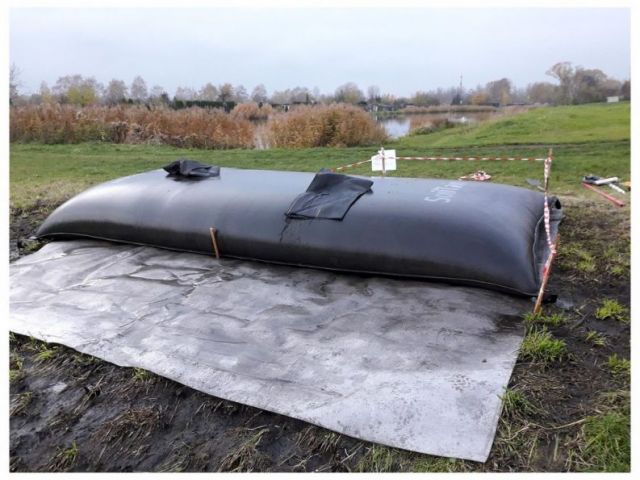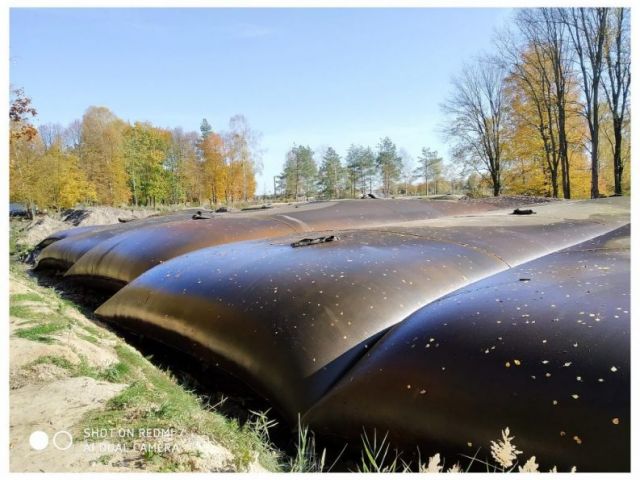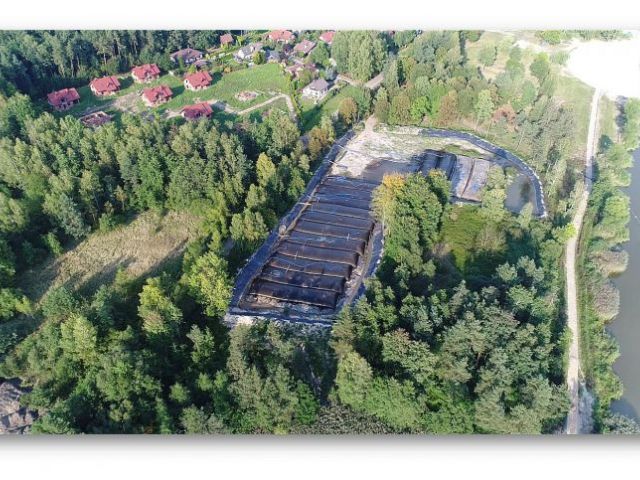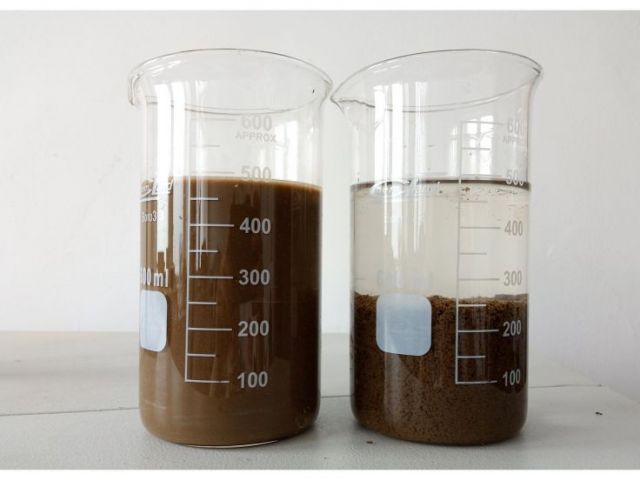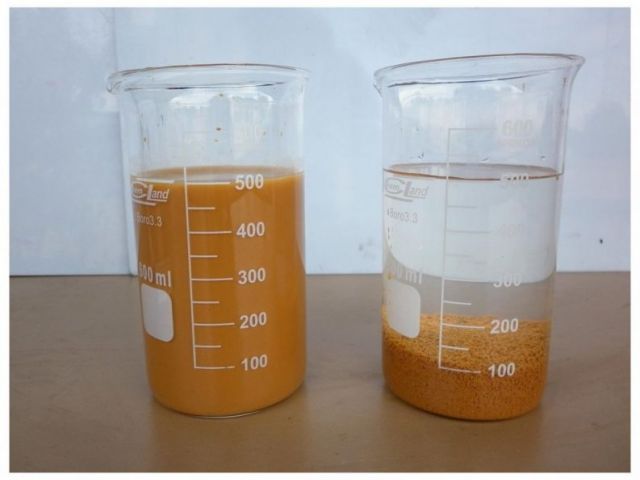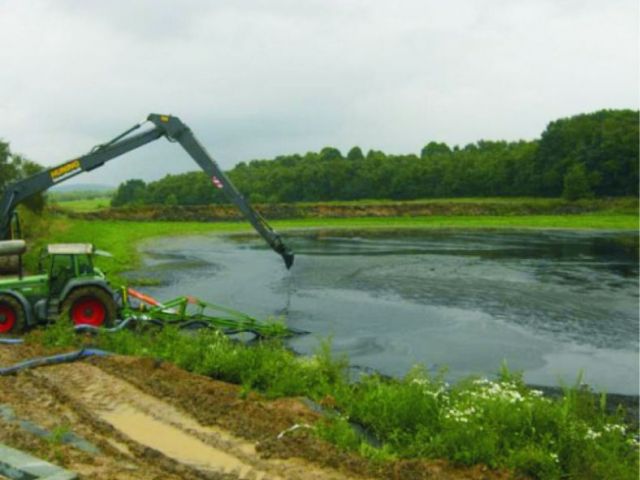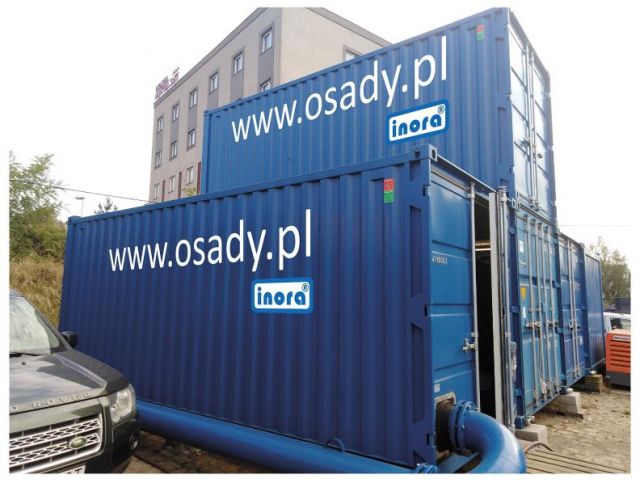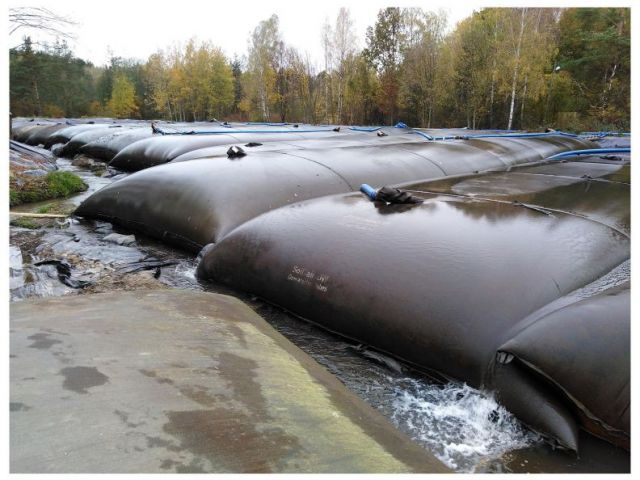Sludge dewatering technology with SoilTain® geosynthetic tubes
SoilTain® geosynthetic tubes create a modern technology, that is extremely effective and economical method of sludge dewatering. SoilTain® containers are made of a specially sewn polyester or polypropylene geotextile. High water permeability, combined with high strength of the geosynthetic material forming the SoilTain® casing, ensuring correct filtration parameters, and thus quick filling of the geosynthetic tube structure. The technology of SoilTain® containers is designed for gravity dewatering of various types of hydraulically transported sludges. This method works well for dewatering of sewage sludges through bottom sediments of water reservoirs, marine sediments or various types of post-production sediments.
Depending on type of the sediments, a properly selected SoilTain® geosynthetic container is placed in the created depression, and if natural soil protection is required, an additional land seal is created. In the next step, the hydrated sludge is collected by a pump appropriate for a given implementation, and the output through the flocculation process is directed to geosynthetic containers, where dewatering process takes place.
A very important element of the sludge dewatering technology in SoilTain® geosynthetic tubes, is the dosing of polyelectrolytes (flocculants) into the hydrated sludge, which aggregate solid particles and allow to easily drain an excess water from the sludge.
After the process is completed, the dewatered sludges can be removed from the container casing and transported to the final storage site, or planted on the site. They can also remain inside the geosynthetic container and be covered with soil and then greened.
Sludge dewatering - following stages of the process.
- Appropriate preparation of the area where the geosynthetic tube will be placed.
- Extraction of sludge by means of a dredger, suction-cut dredger or submersible pump.
- Addition of polyelectrolytes for binding of small organic particles.
- Pumping the sludge with polyelectrolytes into geosynthetic containers and sludge dewatering.
- Management of dewatered sludge.
Types of sludges that can be dewatered with the proposed technology:
- bottom sediments (seaports, ponds, rivers, canals),
- sewage sludges (sewage treatment plants),
- post-production sludges,
- mine sludges,
- and many others.

